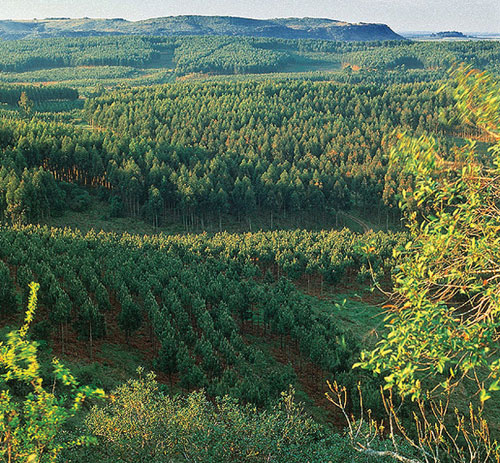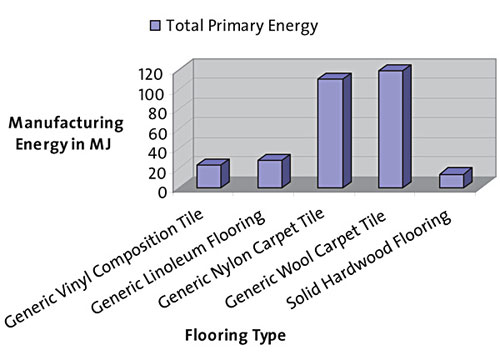Hardwoods in Green Building: Plantation-grown Eucalyptus Makes its Mark as a Versatile, Sustainable Exotic Species
Storage of Atmospheric Carbon Dioxide
Selection of wood products actually helps remove carbon dioxide, a key gas implicated in global warming, from the atmosphere. Through photosynthesis, growing trees absorb carbon dioxide from the air and convert it to carbon and oxygen. The carbon becomes an integral part of the wood fiber where it remains stored in long-lived wood products well after the lumber is harvested. The amount of stored carbon adds up considerably. According to the Canadian Woods Council, a typical 2,400-square-foot wood-framed home holds 7 tons of carbon (28 tons of carbon dioxide), equivalent to the emissions of a fuel efficient car over seven years. Since young forests capture more carbon dioxide than older, more mature forests whose growth rate has slowed, harvesting mature trees and regenerating naturally or with tree seedlings can increase the amount of carbon sequestered from the atmosphere.
 |
Wood comes from a natural, renewable resource. Photo courtesy of Weyerhaeuser |
Â
Primary Energy Requirements
Numerous studies attest to the fact that wood requires substantially less energy to manufacture than alternative materials. According to the Consortium for Research on Renewable Industrial Materials (CORRIM), solid hardwood flooring requires about one-half the energy to produce as vinyl composition tile and less than one tenth the energy of wool carpet tile.Â
CORRIM further found that compared to steel and concrete, wood-based building materials require less energy to produce, emit less air and water pollution, and result in lower amounts of CO2 to the atmosphere. CORRIM researchers found that compared to a wood framed house, a steel-framed home used 17 percent more energy; had 26 percent more global warming potential; had 14 percent more air emissions and more than 300 percent water emissions. The concrete-framed home used 16 percent more energy; had 31 percent more global warming potential; had 23 percent more air emissions; had roughly the same level of water emissions and produced 51 percent more solid waste.
 |
Source: CORRIM |









